May 15, 2022
Chair: Noriko Kawakami, TMEIC
►14:00~14:27
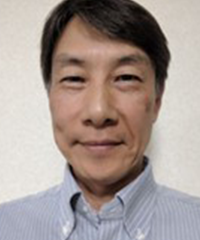
-
Naoto Fujishima
Development Division
Semiconductors Business Group
Fuji Electric Co., Ltd.Presentation Title
Technical Trend of Power Semiconductor Devices
-
Biography
Dr. Naoto Fujishima received B.S. degree in Electrical Engineering from Hokkaido University, Japan, in 1985. Then he received M.S. and Ph.D. degrees both in Electrical and Computer Engineering from University of Toronto, Canada, in 1998 and 2003, respectively. In 1985, he joined Fuji Electric, Co., Ltd. He is currently the Chief Expert of Development Division in the Semiconductors Business Group in Fuji Electric. His current responsibilities include the development of silicon and silicon carbide power devices. He was a technical committee member of ISPSD from 2015 to 2019. He is currently a board member of PCIM-Asia.Abstract
In order to realize a sustainable society, there are key challenges such as less carbon emission, more efficient energy use, and saving resources for preventing global warming. Dealing with these issues, the spread of renewable energy through electrification of automobiles, photovoltaic power generation, wind-power generation, etc. is rapidly progressing. In these applications, efficiency improvement and size reduction of power electronics equipment play a major role, and power semiconductor devices, which are key devices for power electronics equipment, are required to further reduce their losses and sizes. In this seminar, state-of-the-art power devices and their applications are presented mainly on Si-RC-IGBT (Silicon-Reverse Conducting-Insulated Gate Bipolar Transistor) and SiC-MOSFET (Silicon Carbide Metal-Oxide-Semiconductor Field-Effect Transistor).
►14:28~14:55
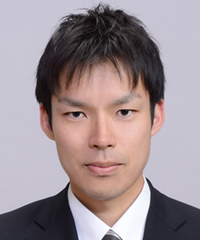
-
Issei Takeuchi
Abstech Co., Ltd.Presentation Title
System Abstraction Based on Element Description MethodRelated Paper
“Abstraction of Thermal Welding System based on Element-Description Method”
IEEJ Journal of Industry Applications (Vol. 9, No. 5, pp. 530-537, 2020.)
-
Biography
Issei Takeuchi received the B.E. degree in electrical, electronic, and communication engineering from Chuo University, Tokyo, Japan, in 2005. He received Ph.D. degree in integrated design engineering from Keio University, Yokohama, Japan, in 2018. From 2005 to 2021, he worked with the Department of Research and Development, Technology Development Division, Tokyo Automatic Machinery Works, Ltd., Japan. Since 2022, he has been working with Abstech Co., Ltd., Japan. His research interests include motion control, smart factory automation, and motion design for industrial applications. Dr. Takeuchi is a Member of the Institute of Electrical Engineers of Japan, as well as a Member of the Japan Society for Precision Engineering.Abstract
Manufacturing technology has been evolved into mass customization with Artificial Intelligence (AI) after mass production with mechanical system and high-mix and low-volume production with servo motors. In recent years, research for substituting human knowledge and skills using AI has been actively conducted toward to achievement of mass customization. In general, although the representation of a system by AI can obtain high accuracy, it is difficult to interpret the physical meaning of the computation process, and there is a problem that the thinking process for deriving a solution is black-boxed. Thereby, the possibility that the master-slave relationship between humans and machines is reversed cannot be completely denied, and it is difficult to achieve a rich society in which humans and machines can coexist permanently. Therefore, it is an important issue how to make machines and robots intelligent within the range of human understanding. Nowadays, research on eXplainable Artificial Intelligence (XAI) technology has been actively conducted.
The presentation will introduce an element description method (EDM) as one of the XAI technologies that abstracts system. The EDM can abstract human knowledge and the thinking process of artificial intelligence, and humans and machines can design models interactively because the abstracted model can be understood by humans. The EDM enables effective cooperation between the "experience and knowledge" cultivated by humans and the "computing power" of machines, and the achievement of "sustainable development" of humans and machines can be expected.
Chair: Seiichiro Katsura,
Keio University
►14:56~15:23
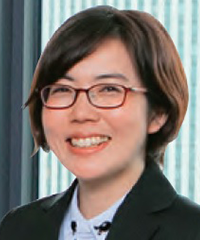
-
Chieko Umeno
Toshiba Mitsubishi-Electric Industrial Systems CorporationPresentation Title
Power Electronics Technology Contributing to Realization of Sustainable Society
-
Biography
Chieko Umeno is a Design Engineer at Toshiba Mitsubishi-Electric Industrial Systems Corporation (TMEIC) in Japan. She got M.Eng degree in Electrical Engineering from Tokyo Institute of Technology in 2006. She joined TMEIC in 2010 and has been involved in development of PV inverter products and leading their certification projects for international markets.Abstract
Power electronics technologies have been utilized in renewable energy systems and contributing to realization of sustainable society. Photovoltaic system inverters and energy storage system inverter will be introduced as examples.
►15:40~16:07
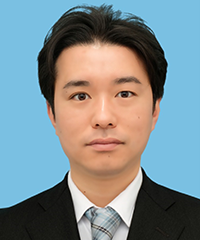
Ryohei Kitayoshi
YASKAWA Electric CorporationPresentation Title
Vibration Suppression of Two Inertia System Using an Equivalent Rigid-body Observer
-
Biography
Ryohei Kitayoshi received the M.S. degree in department of systems science graduate school of informatics at Kyoto University, Japan, in 2011 and received Ph.D degree from the University of Tokyo, Tokyo, Japan in 2021.
Currently, he is engaged in research and development of servo motors and industrial robots at Yaskawa Electric Corporation. His research interests include automatic controller design, control of servo motors.Abstract
In a mechanical system whose control target is known, a precise control model of the controlled object is defined using a system identification method, and an optimum control method is selected and designed using modern control theory. However, with a general-purpose servo drive, the controlled model cannot be defined completely in advance.
In this seminar, we will introduce a method of suppressing mechanical resonance with an equivalent rigid-body observer based on a motor model, which can be installed without constructing the controlled object model. In addition, the effectiveness of the proposed method to both semi-closed and full-closed controlled systems will be illustrated using experimental results with the characteristics of a two-inertia system.
Chair: Kantaro Yoshimoto,
Tokyo Denki University
►16:08~16:35
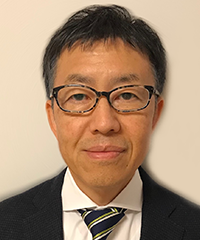
-
Akihiro Shibuya
Alliance PED
Powertrain and EV Engineering Division
Nissan Motor Co., Ltd.Presentation Title
e-POWER technology in Nissan’s electrification strategyRelated paper
"NISSAN e-POWER: 100% Electric Drive and Its Powertrain Control"JIA Cool Japan Invited Paper
IEEJ Journal of Industry Applications (Vol. 10, No. 4, pp. 411-416, 2021.)
-
Biography
Received the B.E. degrees in electronics from Tokyo Denki University, Japan, in 1989.
1989, the career has been started from manufacturing engineering of electronic components in Nissan.
From 2004, he engaged in motor and inverter development for electrified vehicles, and have been leading the development of electrified systems for BEV and e-POWER. Currently, Alliance Powertrain Engineering Director for e-POWER.Abstract
In 2016, Nissan introduced the NOTE, which features an electric power system called e-POWER, to the Japanese market. e-POWER is 100% motor-driven, with all the power being generated by the engine. Since then, Nissan has continued to increase the number of e-POWER vehicle models. As part of the electrification strategy of Nissan, e-POWER has become an integral component of its electric vehicles. Especially, the role of this technology is continuously delivering the pleasure and comfort of a seamless driving experience to customers, while also achieving environmentally friendly fuel economy and emission performance.
This lecture covers the features of e-POWER, the new technologies for 2nd generation and the further improvement in the future.
►16:36~17:03
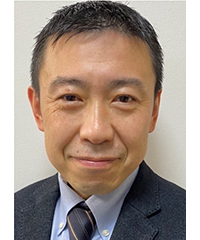
-
Masaya Inoue
Mitsubishi Electric CorporationPresentation Title
Development of a 48V Integrated Starter Generator for Mild Hybrid VehicleJIA Cool Japan Invited Paper
IEEJ Journal of Industry Applications
-
Biography
Masaya Inoue was born in 1967. He received the B.E. and M.E. degrees from Hokkaido University in 1990 and 1992, respectively. He joined Advanced Technology R&D Center, Mitsubishi Electric Corporation, where he has developed various kinds of electrical machines. In 2010, he joined Himeji Works, Mitsubishi Electric Corporation, where he is conducting vehicle electrification products.
Mr. Inoue is a member of the IEEE and IEEJ.Abstract
This paper presents the development of a 48 V integrated starter generator (ISG) for mild hybrid vehicles. The motor needs to satisfy power and torque performances requirements under the 48 V system voltage as well as the passenger vehicle's specific requirements, such as acoustic noise and layout space. Several processes have been explored to obtain a 48 V ISG such as the pole number selection process, the electromagnetic design approach for reducing acoustic noise, and a novel position sensor topology. By using the developed technologies, a 48 V ISG motor is designed, built, and tested. Furthermore, the developed motor is demonstrated to achieve 180 Nm, 15 kW exceeding the 95% motor efficiency with acoustic noise reduction design and thin axial motor length.



